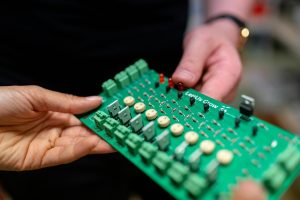Legal Implications of Artificial Reproductive Technologies
The use of artificial reproductive technologies (ART) has been on the rise in recent years, bringing with it numerous legal implications. These technologies, which include in vitro fertilization, egg and sperm donation, and surrogacy, have revolutionized the way couples and individuals can conceive a child. While ART has provided hope and opportunities for many, it has also raised complex legal questions and challenges for the legal system. In this article, we will explore the legal implications of artificial reproductive technologies and how they have impacted the fields of family law, contract law, and property law.
Family Law
One of the primary issues surrounding ART is the definition of legal parenthood. In traditional methods of conception, the mother who carries and gives birth to the child is considered the legal mother, while the man who fathered the child is considered the legal father. However, with ART, the biological and legal parents may not be the same. In some cases, a donor may have no legal rights or obligations towards the child, while the intended parents who raised the child may have no biological connection.
This becomes especially complicated in cases of surrogacy, which is often used by couples or individuals who are unable to conceive or carry a child. In these situations, the intended parents may enter into a contract with a surrogate who agrees to carry and give birth to the child. However, the legality of such contracts varies from state to state and country to country, leading to inconsistent and often confusing laws regarding surrogacy. For example, some states prohibit any form of surrogacy, while others allow only altruistic surrogacy where the surrogate receives no payment beyond medical expenses.
Custody and Child Support
The complex nature of legal parenthood in ART cases can also have implications on custody and child support. In cases where a child is born through surrogacy, determining custody can be challenging if the intended parents and surrogate do not agree on their roles and responsibilities. Similarly, in cases where a donor has contributed genetic material, they may be held responsible for child support even if they have no legal rights to the child.
Furthermore, with the potential for multiple donors, such as in cases of sperm or egg donation, determining parentage can become even more complicated. This can lead to disputes and legal battles, which can have a significant impact on the well-being and stability of the child.
Contract Law
Contracts play a crucial role in artificial reproductive technologies, particularly in cases of surrogacy and egg or sperm donation. These contracts outline the rights and obligations of all parties involved, including the intended parents, donor, and surrogate. However, the enforceability of these contracts can vary greatly depending on the jurisdiction.
For example, in some states, surrogacy contracts are considered void, and any intended parentage is determined through adoption. This means that even if the surrogate has agreed to hand over the child to the intended parents, there is no legal guarantee that they will have parental rights. This can lead to significant legal and emotional distress for all parties involved.
Ownership of Genetic Material
Another issue that arises in contract law is the ownership of genetic material. In cases of sperm and egg donation, the donor may have different intentions than the intended parents about the use of their genetic material. This can lead to legal disputes if the donor objects to the intended use of their genetic material, such as when the intended parents wish to use their genetic material to conceive a child with a surrogate.
Property Law
ART also has implications in the field of property law, particularly when it comes to inheritance and estate planning. In traditional methods of conception, inheritance is determined based on biological relationships. However, with ART, inheritance can be more complicated, as legal parenthood and genetic relationships do not always align.
In cases of egg and sperm donation, the donor may pass down their genetic material to their offspring, regardless of their legal relationship. This can lead to confusion and disputes over inheritance, especially if there are multiple donors involved. Additionally, in cases of surrogacy, the child may have a different legal mother and father than those who raised them, leading to complications in determining inheritance rights.
Need for Clear Laws and Regulations
The legal implications of artificial reproductive technologies highlight the need for clear and consistent laws and regulations. Currently, the laws surrounding ART vary greatly from state to state and country to country, leading to confusion and challenges for all parties involved. As the use of ART continues to grow, it is essential for the legal system to adapt and create a framework that protects the rights of all parties, particularly the well-being of the children born through these technologies.
Conclusion
The legal implications of artificial reproductive technologies are complex and continuously evolving. From issues of parentage and custody to contract enforceability and property rights, ART has challenged the traditional definitions of family and parenthood. To ensure fairness and protection for all parties involved, it is crucial for lawmakers to carefully consider these implications and create clear and comprehensive laws and regulations. Only then can ART truly fulfill its promise of providing hope and opportunities for all those seeking to start a family.











